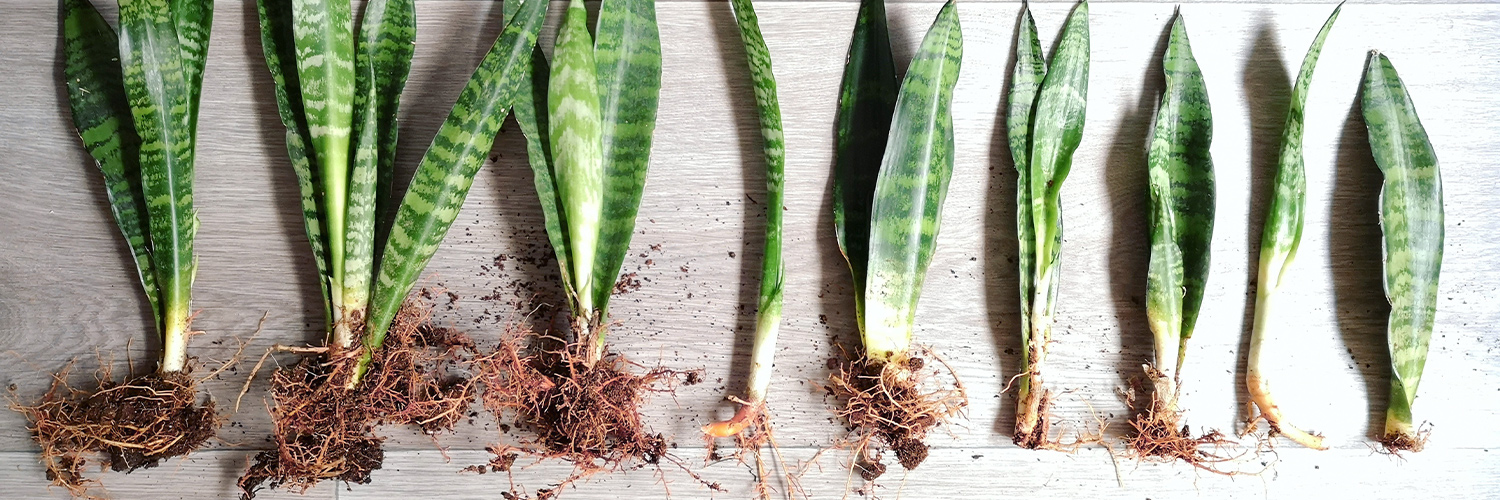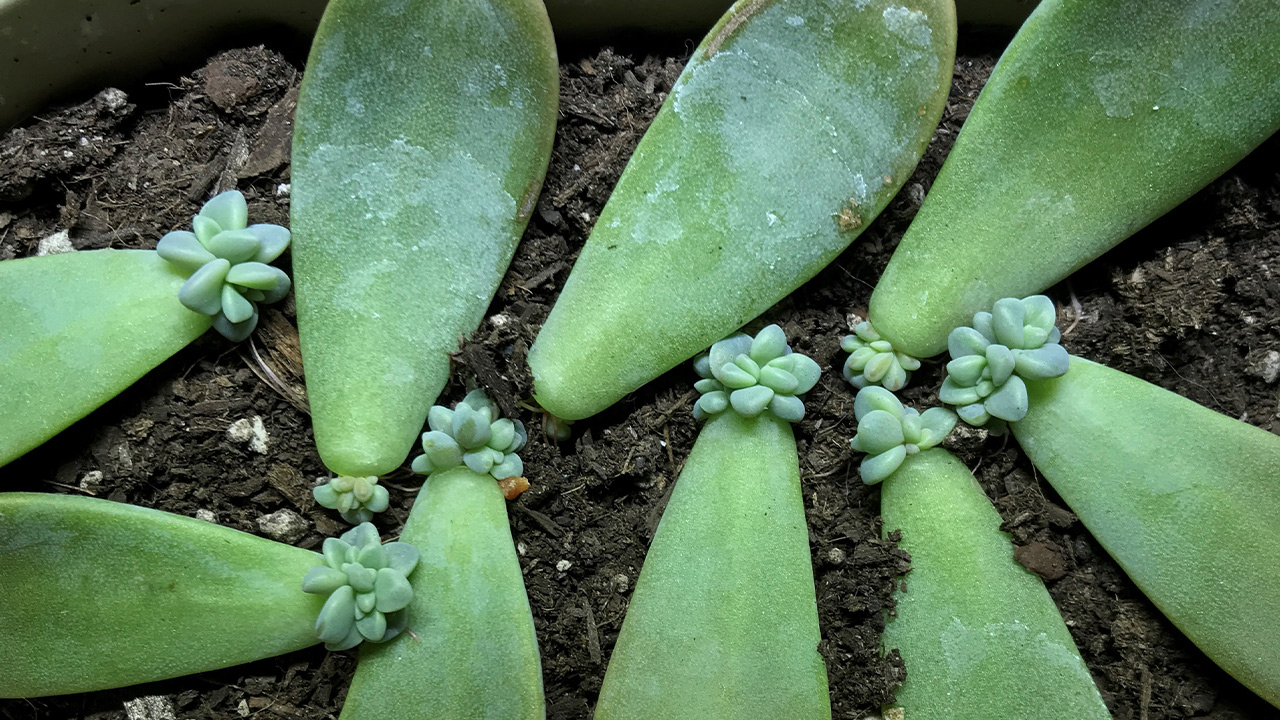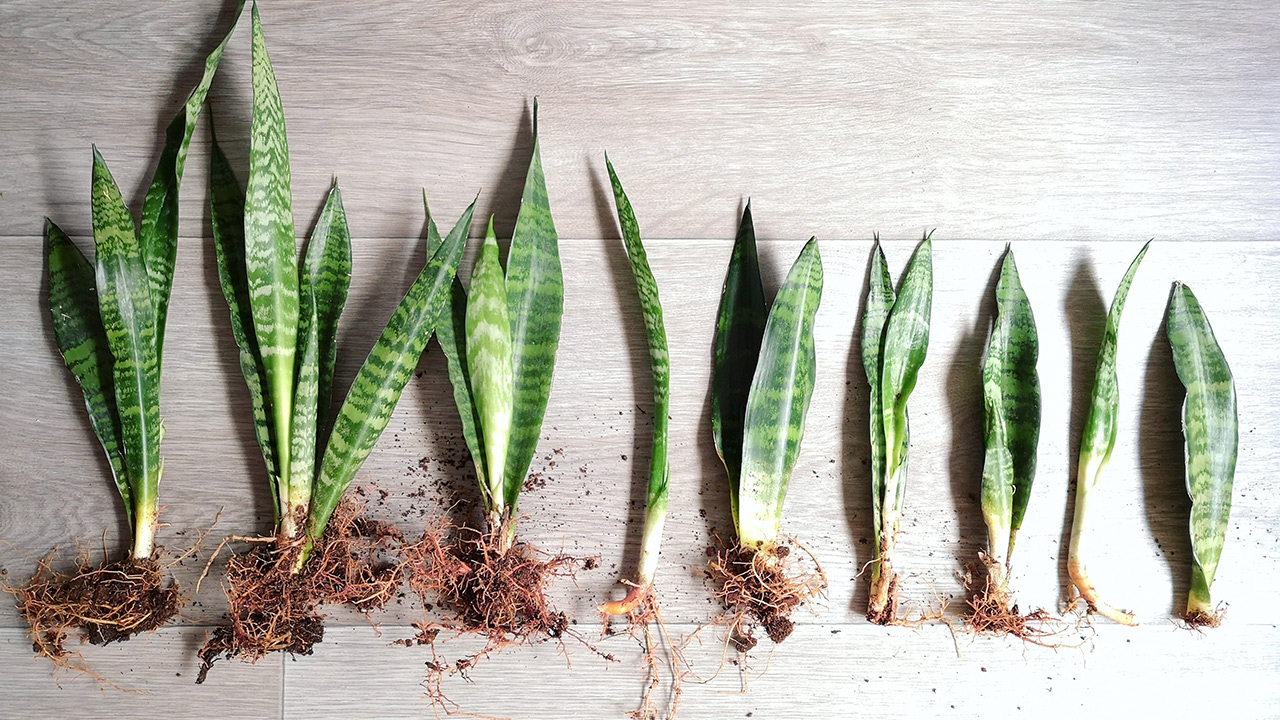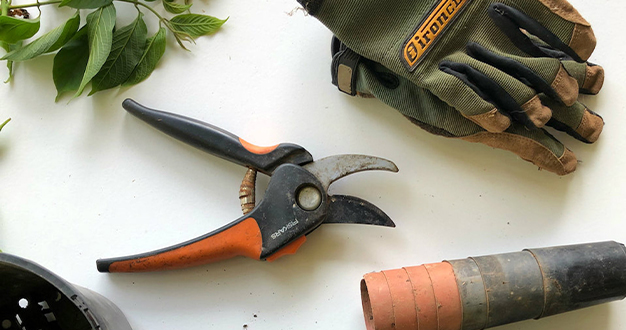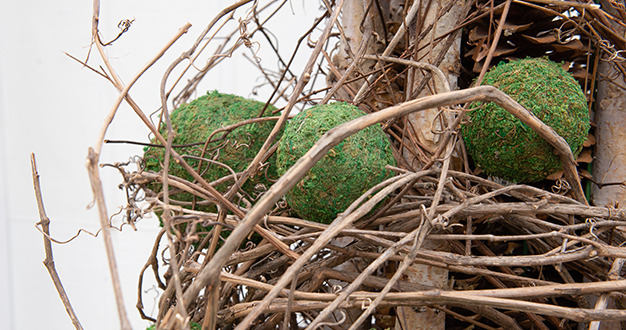
One of the most rewarding things about houseplant parenting is being surrounded by all that lush green foliage – and sharing this strange obsession with the other plant people in your life. Fortunately for us, many of our favorite houseplants make it all too easy – quickly producing new baby plants through simple propagation techniques, so you can continue growing your collection or gifting plants to all your friends and family. And to watch an entirely new plant develop from just a small leaf or stem cutting is exciting. In water, in soil, or by division, here we share three easy ways to grow new plants from just pieces of your current collection.
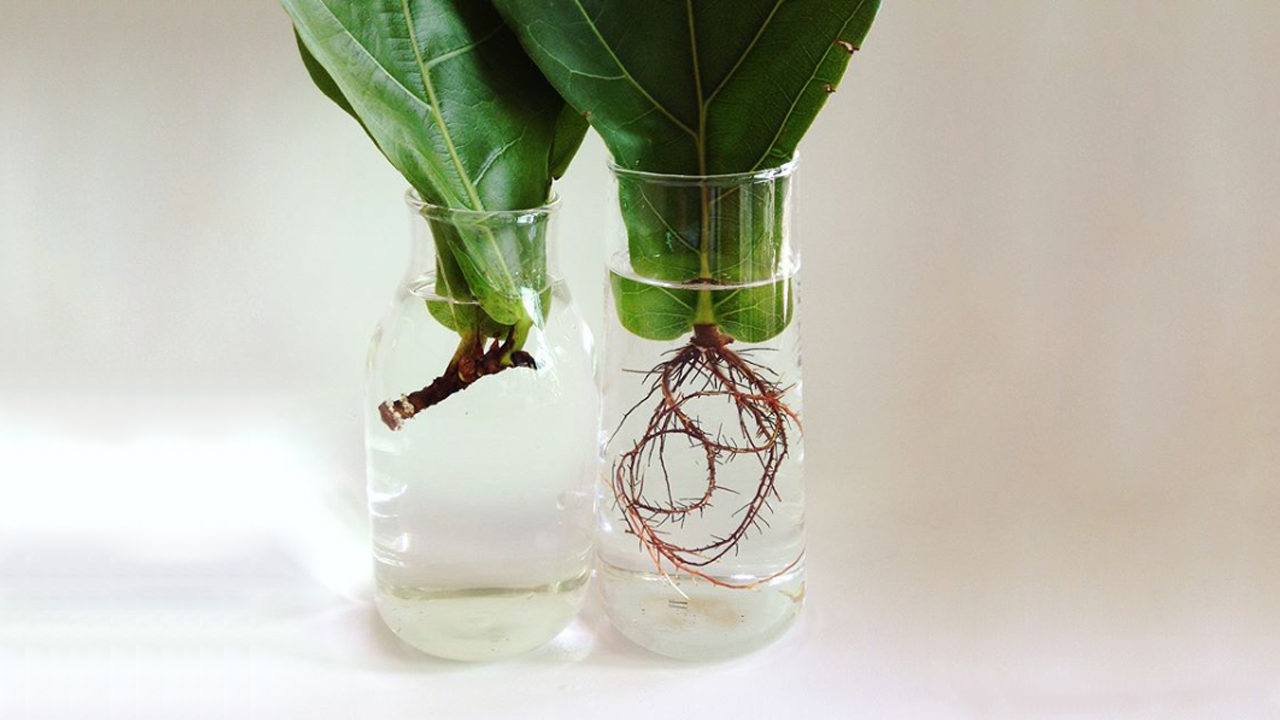
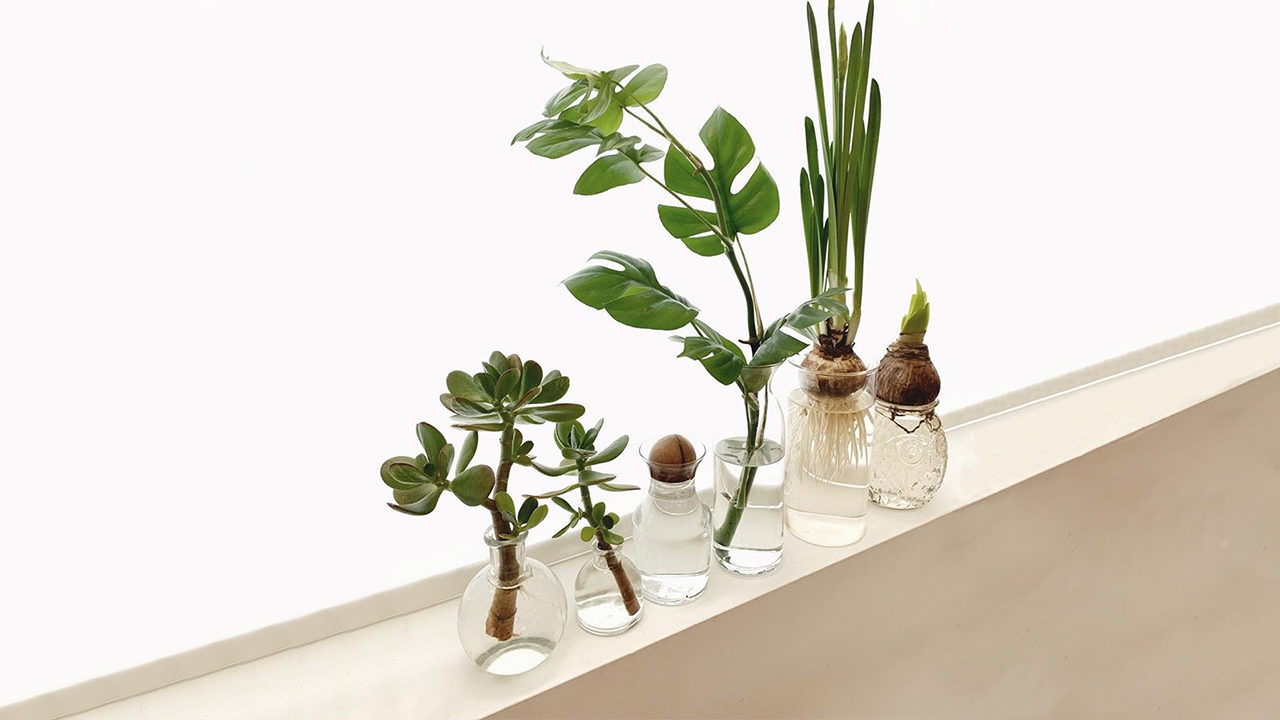
In Water
Many of our favorite foliage houseplants – including pothos, monstera, wandering jew, philodendron, hoya, and peperomia to name a few – can be propagated by simply placing stem cuttings in water and watching for roots to grow. For best success, find a stem about four or more inches long that’s healthy and free of disease with several leaves attached. For the cut, use a sharp, clean knife and choose a spot just below a node – where a leaf is attached – then remove the leaves from the bottom half of the cut stem. Place the stem in a glass of clean water in a space with bright, but indirect light. Some plants will begin to form roots more quickly than others, so just be patient and be sure to refresh the water as needed. When the roots are an inch or longer, carefully transfer the cuttings to a small container with potting soil.
In Soil
Stem cuttings can grow roots in potting mix too. As with water propagation, you’ll want to select a healthy stem with a few leaves on it, remove the bottom leaves, and place the stem in fresh potting soil. If the cutting is from a succulent or cactus, be sure to let the cut end dry for several days before poking it into new soil – the formation of a callus on the cut end is an important step for these plants. Then keep the soil evenly moist but not soggy. Extra humidity and warmth encourage root development too.
And some plants can root and grow from just leaf cuttings – whole leaves or even segments. Good candidates for this method include African violets, begonias, jade, kalanchoe, sansevieria, ZZ plant, and all kinds of succulents. For this type of propagation, cut a leaf off with just a little segment of petiole – the slender stem that attaches the leaf to the main stem of the plant. Poke the petiole into evenly moist soil and keep it in a warm location with indirect light. Until roots begin to grow, the leaf has very little material to draw in water, so humidity is important. We recommend misting your cuttings occasionally or placing the entire pot in a large plastic bag until you see new growth.
For sansevieria – with those long, strappy leaves – cut a healthy leaf crossway into two or three-inch segments. Be sure to note which end of the segment is down – the pieces won’t root if they’re planted upside down. Insert the segments about a third of their length into evenly moist soil. Then be patient. It can take weeks or even months to see new growth, but it’s rewarding when it finally happens.
By Division
Division is another way to create new plants from existing ones. One way to propagate by division is to split a multi-stemmed plant – like a fern, ivy, sansevieria, or wandering jew – into portions, each with its own set of stems, leaves, and roots. To separate a plant this way, first remove it from its pot – then use your fingers to gently tease apart the root system, creating smaller groups with several healthy leaves and roots still attached to each one. Once the pieces are separated, you can plant each new group into its own pot with fresh potting soil. Just be sure to use a smaller pot than the original container because too much excess soil will likely lead to root rot.
Some plants produce little clones of themselves – sometimes called pups, plantlets, or offshoots. Spider plant, bromeliad, pilea, and many cacti are classic examples. Another way to propagate by division is to cut these babies from the parent and plant them separately in their own pots. A spider plantlet is easy – simply cut the stem connecting it to the mother plant then set the baby’s base in new soil. Pilea and bromeliads are a little trickier – their pups are connected through stems under the soil. To separate these plants, use a sharp knife to poke gently into the soil, locate the connecting stem, and cut the pup free.
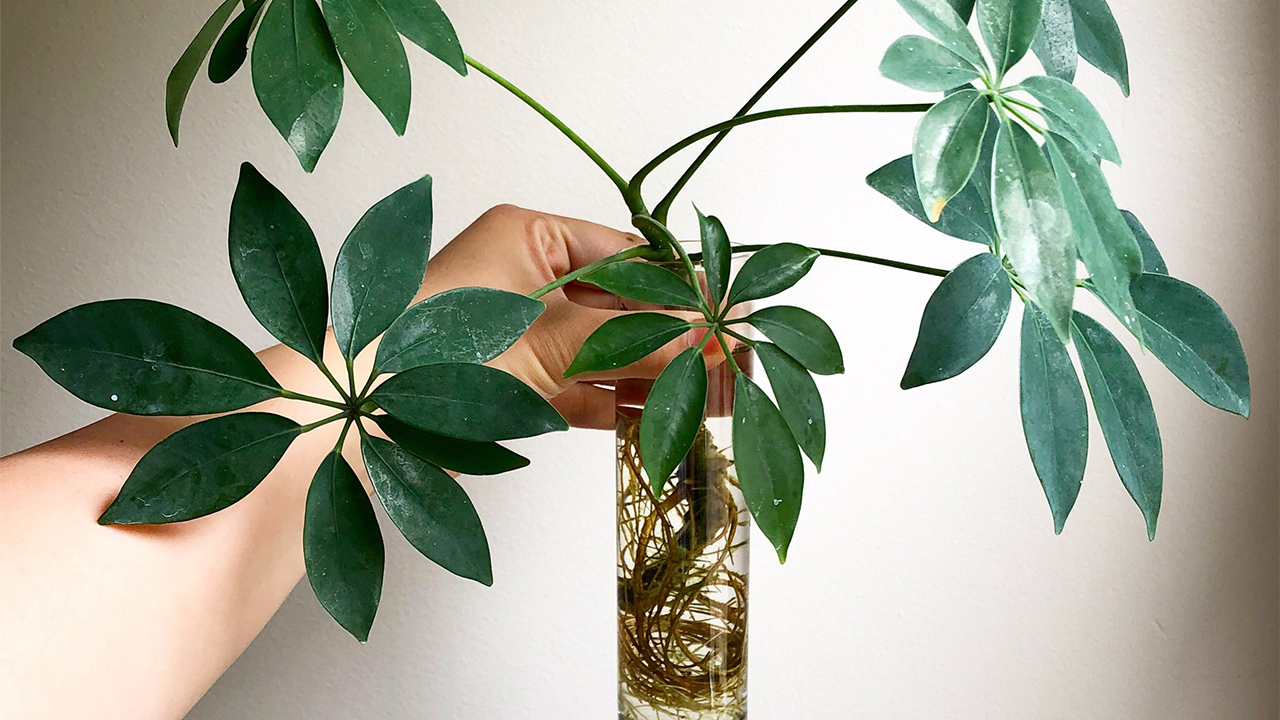
Add to Your Growing Collection
Propagation is a great way to dive a little deeper into the rewarding life of a plant parent. We hope you’ll give it a try with some of the plants in your collection – and as always, if you have questions, just stop by the Greenhouse and talk with our team.
Special thanks to @plantsandgin, @sues_abode, @cubehousejungle, @quickanddirtygardens, and @goodandplantiful for the photos!

